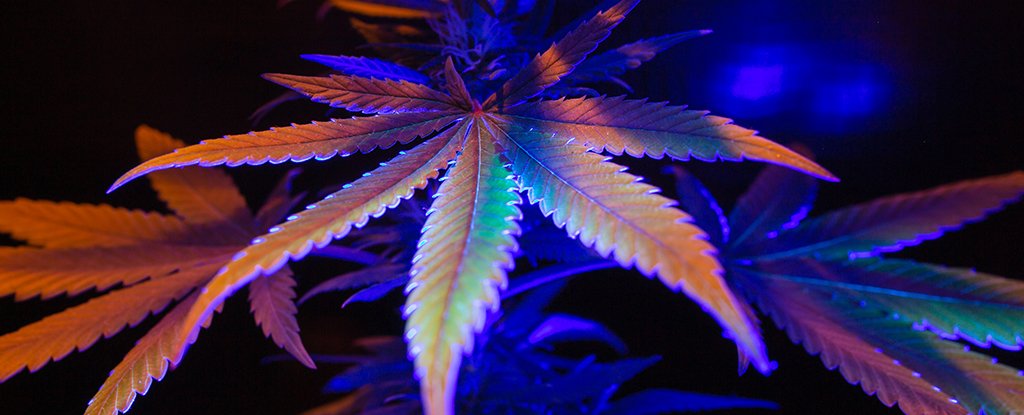Using cannabis raises the risk of teenagers developing a psychotic disorder by a staggering 11 times compared to teens who didn’t report using the drug, a Canadian study has found.
That’s a much stronger association than what previous studies have reported. A 2016 analysis of data from 10 different studies found the heaviest cannabis users were about four times more likely than non-users to be diagnosed with schizophrenia or another psychotic condition.
Part of the reason, aside from cannabis users’ age, is that much of the data used in past analyses of adolescent cannabis use comes from before 2000, when cannabis was far less potent than it is today, the team behind the new analysis suggests.
Estimates vary, but since the 1970s and 80s, the concentration of THC (tetrahydrocannabinol), the main active ingredient in cannabis, has risen by between 14 and 19 percent, as of 2017-2018.
A study of 1,560 UK adults found earlier this year high-potency varieties of cannabis have been linked to higher rates of psychosis, with use of stronger strains as a teen doubling the young adults’ risk of a psychotic episode.
In this new study, McMaster University epidemiologist André McDonald and colleagues looked instead at formal diagnoses of a psychotic disorder, such as schizophrenia, rather than acute psychotic episodes or psychotic symptoms.
They also analyzed psychosis in late adolescence, as well as early adulthood, to make sure they weren’t missing (like other studies might have) a critical window when psychotic disorders tend to first appear.
The team linked survey data on cannabis use in teens and young adults, collected between 2009 and 2012, with public health records in Ontario, Canada, up to 2018. This allowed them to trace recorded diagnoses of psychotic disorders, such as schizophrenia, in the years after cannabis use among some 11,300 individuals.
The researchers found a strong association between using cannabis and the risk of adolescents being diagnosed with a psychotic disorder. Diagnosis rates were 11 times higher among teens aged 12-19 years who said they used cannabis compared to those who didn’t.
However, that association didn’t extend into young adulthood, between the ages 20 to 33, at least not in this particular Canadian study.
“These findings are consistent with the neurodevelopmental theory that teens are especially vulnerable to the effects of cannabis” because their brains are still developing, McDonald says.
“Yet prior to this study, little epidemiologic evidence existed to support this view,” the team notes in their paper.
Most psychotic disorders first begin to develop in late adolescence and early adulthood, but whether that’s linked to someone using cannabis, or a person’s underlying genetics, experience of trauma, or a mix of all those factors – is hard to disentangle.
McDonald and colleagues’ analysis of health records and survey data didn’t include genetic factors or trauma history, making it impossible to say definitively that teen cannabis use caused the recorded psychotic disorders. Observational studies like this, however large, can only point to associations.
But using those health records, the team found that 5 in 6 teens who presented to an emergency department or were hospitalized in Ontario for a psychotic disorder had previously reported cannabis use in Canadian national health surveys.
“The vast majority of teens who use cannabis will not develop a psychotic disorder,” says McDonald, “but according to these data, most teens who are diagnosed with a psychotic disorder likely have a history of cannabis use.”
Canada legalized the recreational use of cannabis in 2018 – the final year of health data included in this study – so future analyses may reveal how those policy changes have affected adolescent health.
Looking more broadly at psychotic episodes, not diagnoses, a recent meta-analysis found that around 1 in 200 cannabis users (or just 0.5 percent) may experience psychosis – a frightening experience involving hallucinations, delusions and paranoia, even if only temporary.
The paper has been published in Psychological Medicine.











/https://tf-cmsv2-smithsonianmag-media.s3.amazonaws.com/filer_public/34/31/3431771d-41e2-4f97-aed2-c5f1df5295da/gettyimages-1441066266_web.jpg)








Discussion about this post